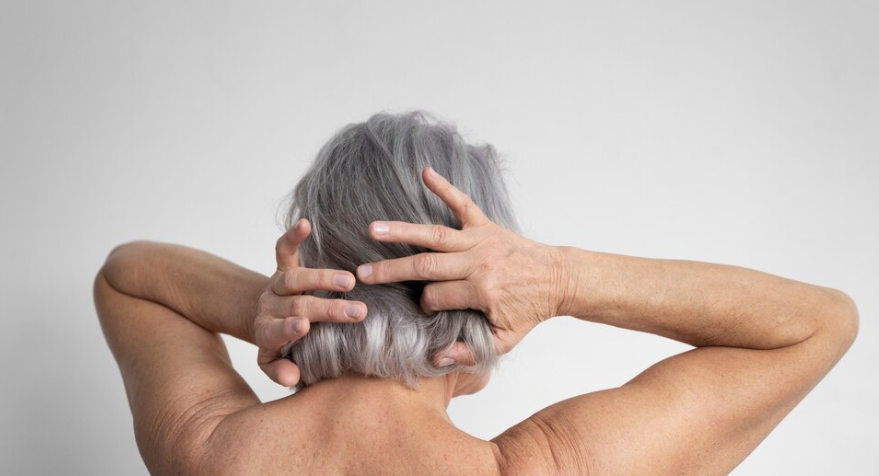The Mystery and the Science Behind Gray Hair

©️ Freepik
Gazing at photos from your youth, you might notice a stark difference – the once vibrant color of your hair now boasts streaks of silver.
This transformation, while inevitable, sparks curiosity: why does gray hair happen?

But How Does Gray Hair Show Up?
The answer lies in the intricate dance between pigment, cells, and the passage of time. At the heart of it all is melanin, a pigment produced by melanocyte cells residing within your hair follicles.
These melanocytes act like tiny artists, determining your hair’s shade – from the rich darkness of black to the sun-kissed glow of blonde.

However, with age, these artistic melanocytes lose their spark. Their activity slows, leading to a decline in melanin production.
As a result, new hair growth lacks the vibrant pigments it once possessed, revealing the underlying white keratin, the protein that forms the core of the hair. This gradual loss of color manifests as the telltale grays we associate with aging.
Age Might Be the Factor but Also…
Genetics plays a crucial role in dictating when this shift occurs. Some may witness the first hints of silver in their early thirties, while others maintain their youthful hues well into their fifties.

While age is the primary culprit, other factors can accelerate the graying process:
- Vitamin Deficiencies: A lack of essential vitamins like B12, D3, biotin, or copper can disrupt melanin production, leading to premature graying.
- Medical Conditions: Certain autoimmune diseases or thyroid problems can affect hair pigmentation, causing early graying.
- Smoking: The damaging effects of smoking extend beyond your lungs. It can also contribute to a decline in melanocyte function and accelerate the arrival of gray hair.
- Chemical Hair Treatments: Harsh chemicals present in dyes and other hair products can damage melanocytes, potentially leading to premature graying.

The science of gray hair isn’t static, and recent research offers a glimmer of hope for those hoping to hold onto their youthful color for longer. Scientists have identified a potential mechanism explaining the graying process. Their focus lies on stem cells within hair follicles.
These stem cells have the remarkable ability to transform into mature melanocytes. However, as we age, these stem cells may lose their mobility and ability to mature properly. This decline restricts the production of new pigment-producing cells, ultimately leading to grays.
What Can You Do About Your Gray Hair?
This discovery paves the way for potential treatments that could reverse or halt the graying process. Imagine a future where we can maintain our desired hair color well into our golden years!

While scientific advancements unfold, here are some ways to embrace your grays with confidence:
- Embrace the Natural Transition: Let your hair grow out naturally, allowing the silver strands to blend gracefully with your existing color.
- Highlight or Lowlight: Opt for subtle highlights or lowlights to create a more gradual transition from color to gray hair. This can soften the contrast and create a more flattering look.
- Explore Natural Remedies: While research on natural remedies for graying is ongoing, some people find success with certain oils and herbs like curry leaves, bhringraj, or amla. However, it’s crucial to consult a dermatologist before applying anything new to your scalp.
Remember, gray hair is not just a physical change; it can also be a symbol of experience and wisdom. So, the next time you catch a glimpse of those silver strands in the mirror, embrace them! They are a unique part of your story, and with a little creativity and confidence, you can rock them with style.
You might also like to read: These 2024’s Fashion Color Trends Are to Die for



